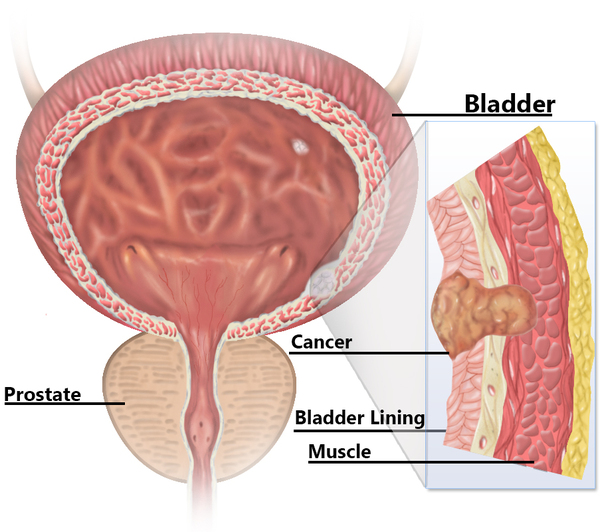Tumors which are form in the bladder is termed as bladder cancer (bladder is a balloon-shaped organ, made generally of muscle. Bladder will stores the urine until you are ready to pass the urine). Transitional cell (or) urothelial carcinoma is the very common type of bladder cancer. Most bladder cancers are nonmuscle invasive.
SUPERFICIAL BLADDER CANCER: It is also termed as non-muscle invasive bladder cancer. This type of bladder cancer is originate on the surface of the inside lining of the bladder. This type of bladder cancer is most common, and found in about 75% of new patients with bladder cancer. Patients often come to know this kind of bladder cancer because of some common symptoms like: blood in urine, frequent urination and irritation when they urinate. Superficial bladder cancer is found in both men and women. In women, symptoms are associated to bladder cancer are urinary tract infections. This cancer is highly curable. Initially to find the cancer, when cancer is assumed, patients have a CT scan to look for problems in the bladder, kidney and ureter. Then have a cystoscopy, the cystoscopy uses a tiny flexible telescope to look the urethra into the bladder. Then bladder is examined carefully.

MUSCLE INVASIVE BLADDER CANCER: Muscle invasive bladder cancer is in which cancer invades the muscle wall of the bladder and it will spread by the way of the lymph and blood systems to attack bone, liver, and lungs, often requires surgery. Approximately 30% of urothelial carcinomas invade the detrusor muscle. Treatment usually includes removal of the entire bladder and construction of a “neobladder” in which a new bladder is surgically inserted to replace the cancerous bladder. Diagnose of this type of cancer tests include ultrasound, cystoscopy and CT scan. By this procedure muscle-invasive cancers are usually treated more aggressively than nonmuscle-invasive cancers.
DIAGNOSE: To differentiate and diagnose superficial and muscle invasive bladder cancer, transurethral resection of bladder tumor (TURBT) is to be performed. It is a process in which bladder tumors can be detached from the bladder wall. After that bimanual examination should be carried out before and after the process of TURBT to evaluate whether there is an undivided cell mass or if the tumor is fixed to the pelvic wall. The pathological classification which is obtained after the TURBT-procedure, is having fundamental importance for making the suitable choice of ensuing treatment and/or follow-up routines.
To know more about bladder cancer and its treatment options use our expert chat 

